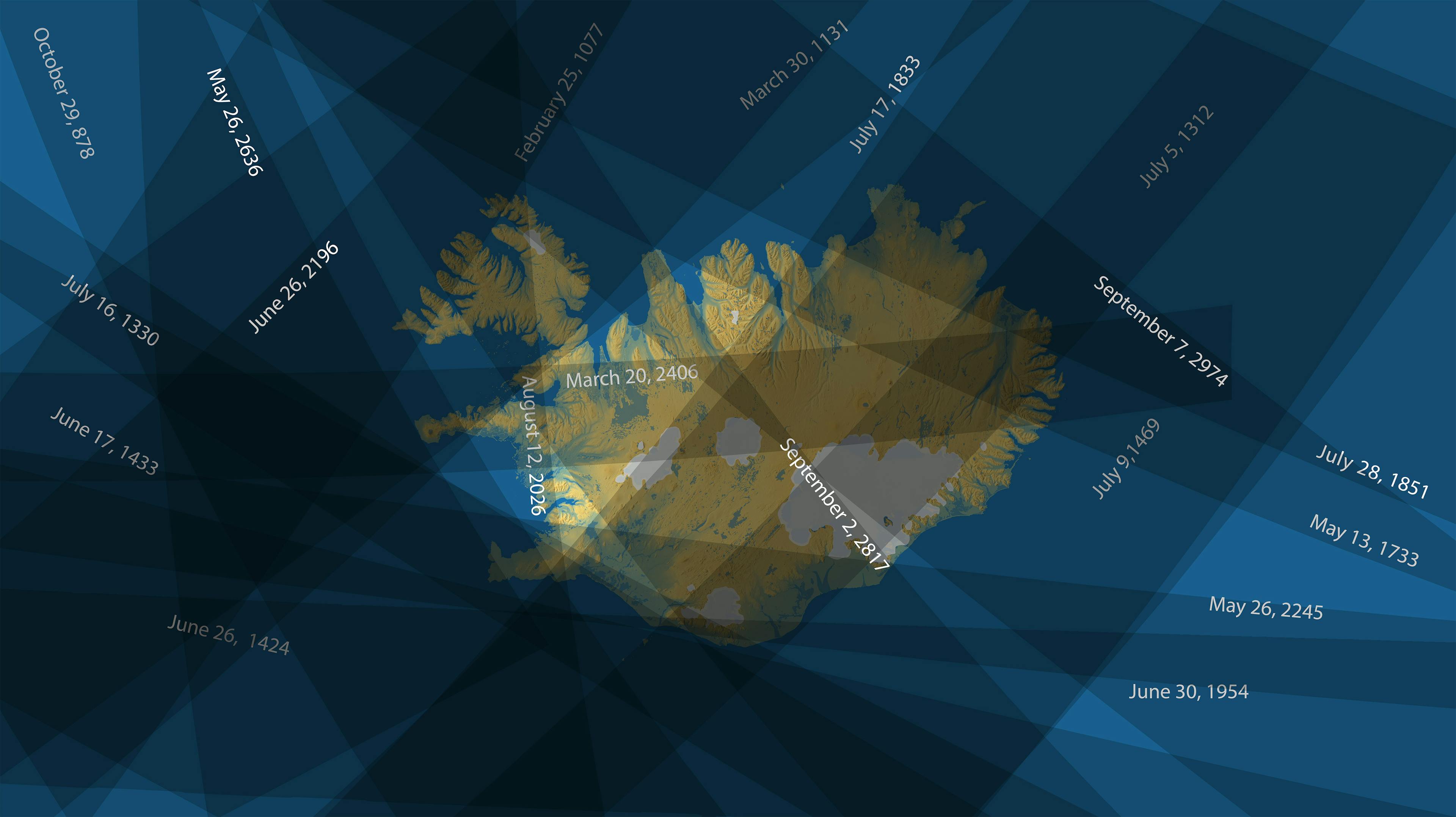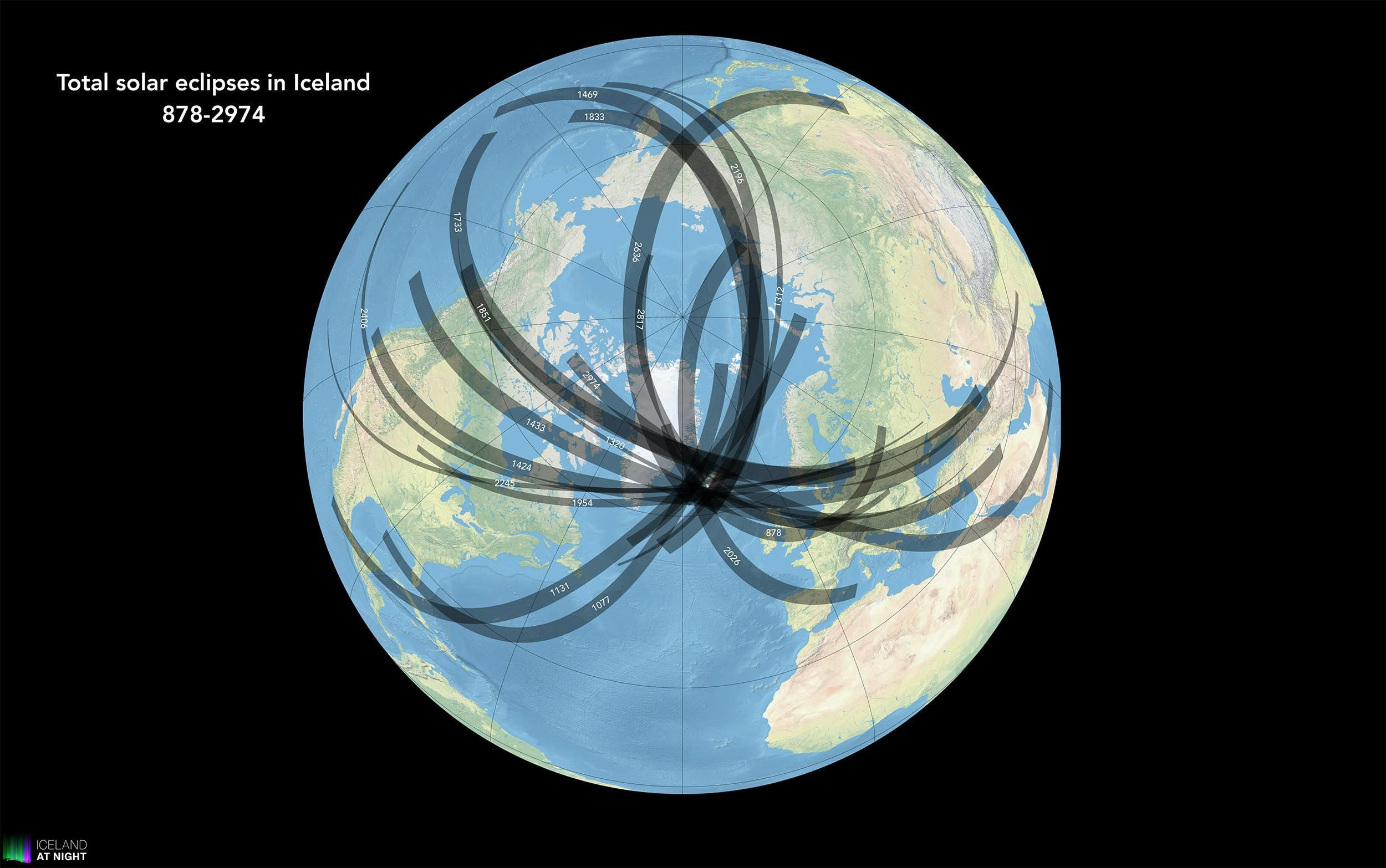
Twelve total solar eclipses have occurred in Iceland since the settlement in 870. Icelanders will experience eight more until the year 3000.
Since Iceland was settled around the year 870, the Moon's umbral shadow has touched down on the country twelve times. From 2026 until 3000, Icelanders experience eight more total solar eclipses.

The shortest interval between two totalities is 9 years, between June 26, 1424 and June 17, 1433. Longest interval is 264 years, from July 9, 1469 until May 13, 1733.
Longest total solar eclipse witnessed in Iceland was on March 30, 1131, when the Moon obscured the Sun for 3m 40s in the Westfjords.
Shortest total solar eclipse happened on July 5, 1312, with a duration of only 47 seconds where now is Kögur lighthouse in the Eastfjords.
Longest future totality in Iceland occurs on September 7, 2974 for 3m 49s in Breiðdalsvík in the south east.
The map shows the path of totality for all of the eclipses above. The map reveals many interesting things, for example that one area has never seen a total solar eclipse since the country was settled and won't for the next thousand years.

A total solar eclipse is a rare sight from any given location on Earth, even though they occur somewhere on the planet every 18 months or so on average.
Calculations by Belgian mathematician Jaen Meeus reveal that total solar eclipses occur every 375 years on average for any given place. For Reykjavík, 593 years pass between two total eclipses (1433-2026) but 1505 years between successive eclipses in Akureyri in north Iceland (1469-2974).
Such a long interval is not at all unique. Before the settlement, the Reykjavík area saw a total solar eclipse on April 26, 117 BC and then again 1505 years later, in 1433.
Sævar Helgi Bragason is the owner and editor of eclipse2026.is and Iceland at Night. He is author of best selling science books for kids and adults, two of which have been nominated for the Icelandic literary prize. Sævar has witnessed four total eclipses.